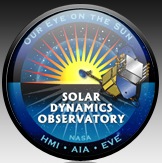
The Dutch Open Telescope (DOT) is an innovative solar telescope of Utrecht University located at the Observatorio del Roque de los Muchachos of the Instituto de Astrofïsica de Canarias on La Palma, Canary Islands. It achieves high-resolution imaging of the sun simultaneously in multiple wavelengths.
Funding provided by Utrecht University, STW

EPICS is an instrument for the direct imaging and characterization of extra-solar planets with the European ELT (E-ELT). EPICS will be optimized for observations in the visible and the near-IR and will have photometric, spectroscopic and polarimetric capabilities.
Funding provided by ESO, NOVA

EST is a 4-meter class solar telescope, to be located in the Canary Islands. It will be optimised for studies of the magnetic coupling between the deep photosphere and the upper chromosphere. This will require diagnostics of the thermal, dynamic and magnetic properties of the plasma over many scale heights, by using multiple wavelength imaging, spectroscopy and spectropolarimetry. EST will specialize in high spatial and temporal resolution using instruments that can efficiently produce two-dimensional spectral information.
Funding provided by EC

An imaging polarimeter for the 4.2-m William Herschel Telescope at La Palma to image circumstellar environments (protoplanetary and debris disks and exoplanets).
Funding provided by NWO/VICI
The HARPS instrument at La Silla, Chile is famous for its planet detections through the radial velocity method. The ultrastable spectrograph system will be upgraded to a precise spectropolarimeter by replacing the obsolete Iodine cell in the Cassegrain adapter with a dual-beam polarimetry unit. This compact unit encompasses two separate modulators, one for circular polarimetry and one for linear polarimetry. Each modulator consists of a superachromatic wave-plate that doesn't introduce (polarized) spectral fringes and a Foster prism that acts as a polarizing beam splitter. The two beams out of the Foster prism are imaged onto the two fibers of the HARPS fiber head. The new instrument mode in combination with the ultrastable spectrograph enables unprecedented observations of stellar magnetism, e.g. through Zeeman-Doppler imaging.
This research projects develops an integrated approach of optimization of overall image quality, in which the actions of a deformable mirror and a post-facto reconstruction algorithm are combined. The optimized approach will use the wavefront sensor signal data and deformable mirror signal data as input to post-facto reconstruction, introduce known phase aberrations during the real-time correction with the AO system to improve the performance of the post-facto reconstruction, and the wavefront aberration information deduced by post-facto reconstruction will be fed back into the adaptive optics system.
Funding provided by STW

The S5T is a compact instrument for daily observations of the scattering polarization on the Sun with large polarimetric sensitivity and stability. Examining the scattering polarization signatures in many spectral lines for the duration of at least one solar cycle yields crucial information about the nature of turbulent magnetic fields in the quiet solar photosphere.
Funding provided by NOVA

The Atmospheric Imaging Assembly will image the solar atmosphere in multiple wavelengths to link changes in the surface to interior changes. Data will include images of the Sun in 10 wavelengths every 10 seconds.
Funding provided by NIVR

Synoptic Optical Long-term Investigations of the Sun (SOLIS) is a synoptic facility for solar observations over a long time frame that is funded by the NSF and designed and built by the National Solar Observatory.
Funding provided by NSF, NSO

Prototype of a linear spectropolarimeter for future Mars and Titan missions to study dust and aerosols in the atmospheres of Mars and Titan. Utrecht University builds the polarimeter and the polarization calibration unit.
Funding provided by NIVR

The prime objective of the Spectro-Polarimetric High-contrast Exoplanet Research (SPHERE) instrument for the VLT is the discovery and study of new extra-solar giant planets orbiting nearby stars by direct imaging of their circumstellar environment.
Funding provided by NWO, NOVA
Astronomical adaptive optics technology is used to dramatically enhance the spatial resolution of in-vivo two-photon microscopy of thick optical tissues.
Funding provided by STW

SOLAIRE is a Research Training Network financed by the European Commission. It consists of 12 European Universities and Research Institutes and a private R&D company. The SOLAIRE network carries out research in solar and interplanetary physics and provides training of researchers at the initial stages of their careers.
Funding provided by EC/RTN

The USO-SP International Graduate School for Solar Physics is a cooperation between Utrecht, the Netherlands: Utrecht University, Sterrekundig Instituut; Stockholm, Sweden: The Institute for Solar Physics of the Royal Swedish Academy of Sciences; and Oslo, Norway: University of Oslo, Institute of Theoretical Astrophysics. The School is supported by the European Commission as an FP6 Marie Curie Action Early Stage Research Training programme.
Funding provided by EC/EST
